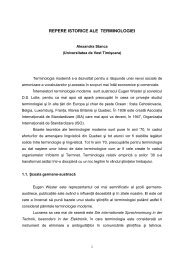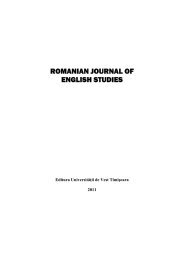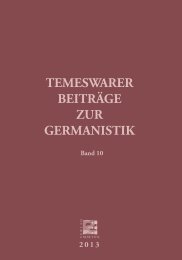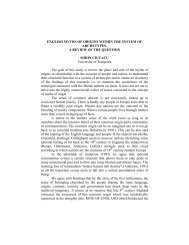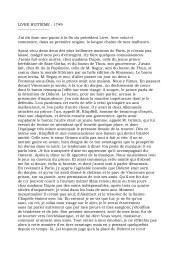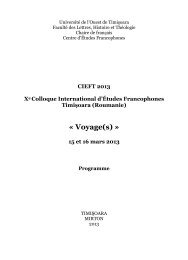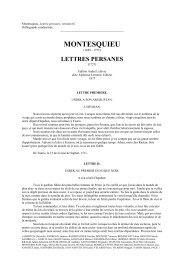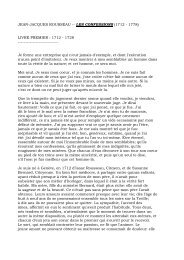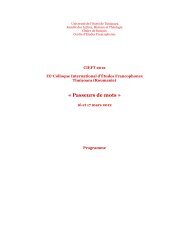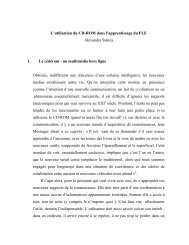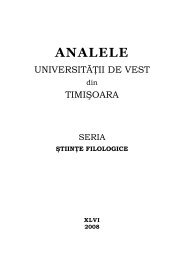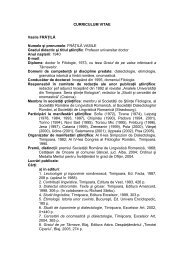TRANSLATION AND MEANING: A CULTURAL- COGNITIVE ...
TRANSLATION AND MEANING: A CULTURAL- COGNITIVE ...
TRANSLATION AND MEANING: A CULTURAL- COGNITIVE ...
You also want an ePaper? Increase the reach of your titles
YUMPU automatically turns print PDFs into web optimized ePapers that Google loves.
TRANSLATING POE’S ‘TO HELEN’ INTO ROMANIAN<br />
CRISTINA NICOLAE<br />
University of Piteşti<br />
1. On literary translation<br />
Literature represents a language within language, both a reduction<br />
and an expansion of the linguistic pattern, therefore the translation of<br />
literary texts raises particular problems. According to Nida’s diagram (apud<br />
Bassnett, 1988: 16) of the translation process, the translator is first a reader<br />
who decodes / analyses the message in the SL, and then a writer who reencodes<br />
/ restructures it in the TL. The ideal position as a reader for a<br />
translator is, according to Lotman (apud Bassnett, 1988: 77-78) the reader<br />
who is able to grasp the structure of a text as well as its various levels and<br />
their interactions. The levels of a text that are of interest for a translator are<br />
the significance (which can be stratified in multiple layers), the form<br />
(language), as well as the cultural background.<br />
The first task that a translator should accomplish is to correctly and<br />
completely understand the text in the SL. Each text can be considered, in a<br />
semiotic approach, a sign having an expression (the linguistic form) and a<br />
content (the meaning). The expression and the content are set against a<br />
cultural background. A very important characteristic of a SL text, which<br />
should be observed in the TL, is style, defined by Leon Leviţchi as “the<br />
specific way in which the author organized his message in point of<br />
coherence and expression, in his desire to value it at the utmost in the<br />
conscience of the potential reader.” (Leviţchi, 1993:98, my translation). This<br />
definition summarizes all the problems in translating literature, because it<br />
draws one’s attention to what the translator should take into account when<br />
translating a text: the logical organisation (coherence), the expression with<br />
the purpose of valuing the message (denotation, connotation, accentuation<br />
and modality) and the specific way of organizing this message. The style of<br />
every work is made specific by the existence of dominants (see Leviţchi,<br />
1993:99). There are dominants of denotation, vocabulary and grammar;<br />
dominants of accentuation and modality; dominants of connotation and<br />
dominants of coherence.<br />
The translation of poetry is the most challenging form of literary<br />
translation. From a strictly linguistic point of view, poetry appears as a<br />
superior form of synonymy at all levels: lexical, grammatical, syntagmatic<br />
(Bantaş, 1998:121). A “translation-oriented text analysis” will present the



